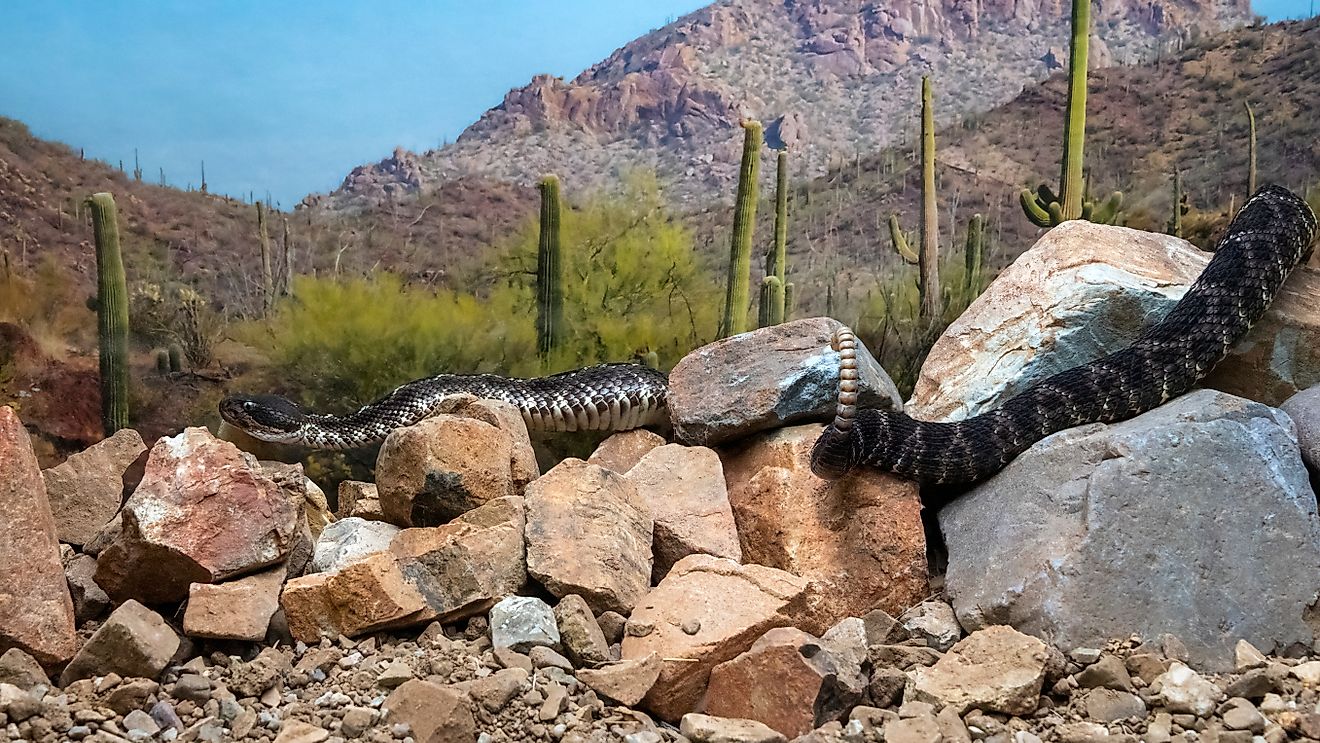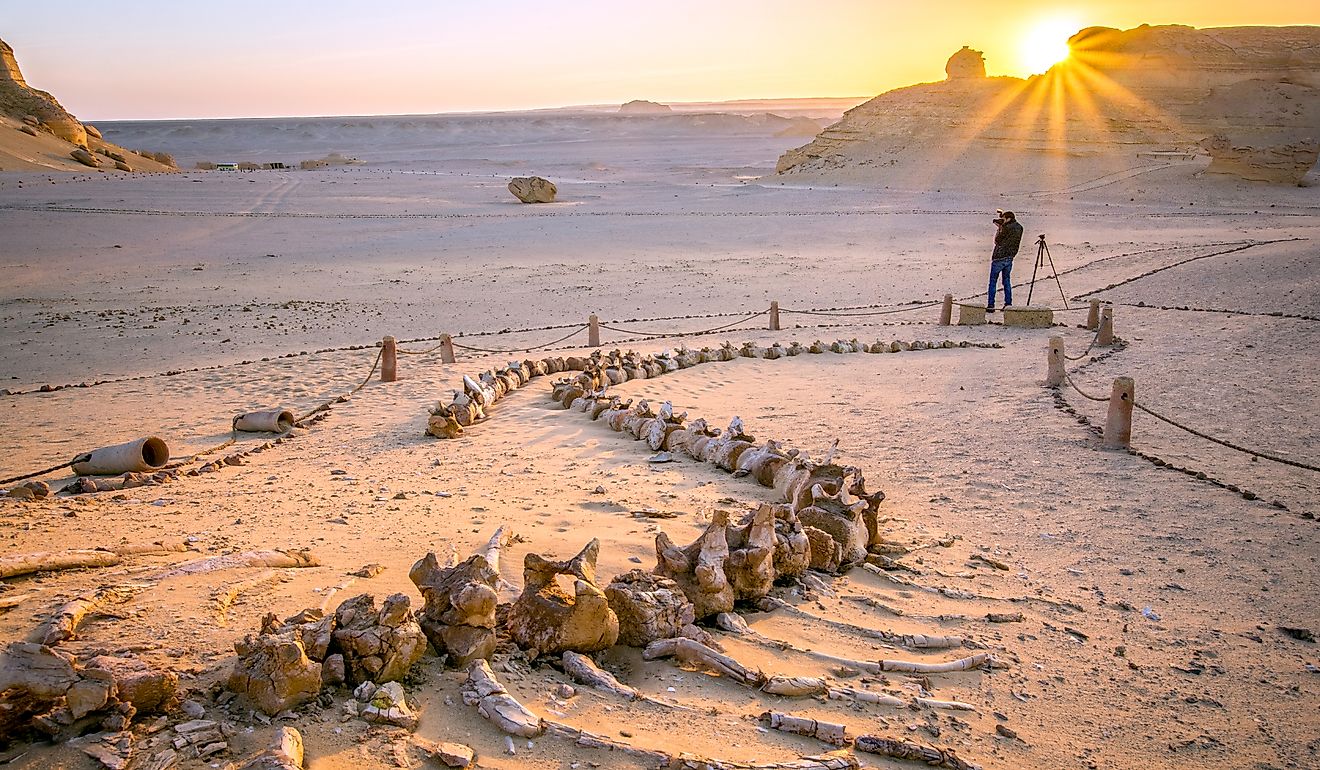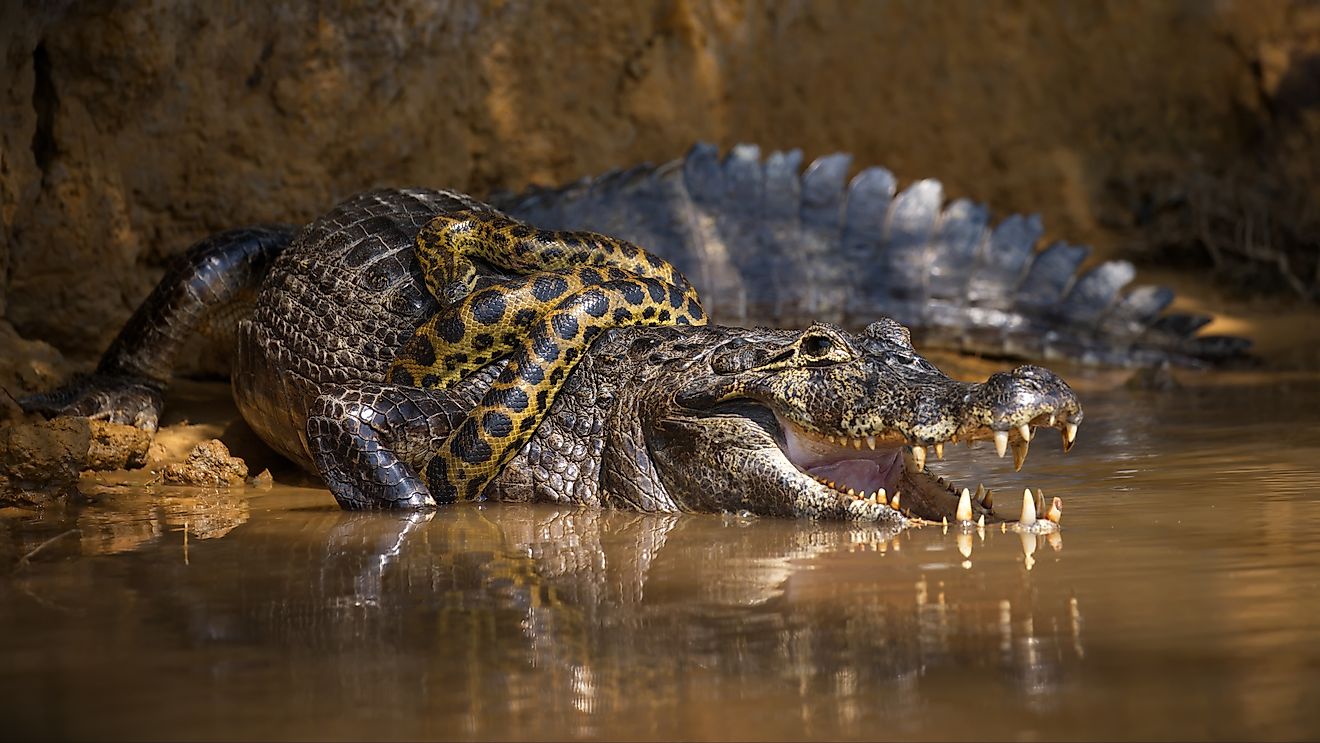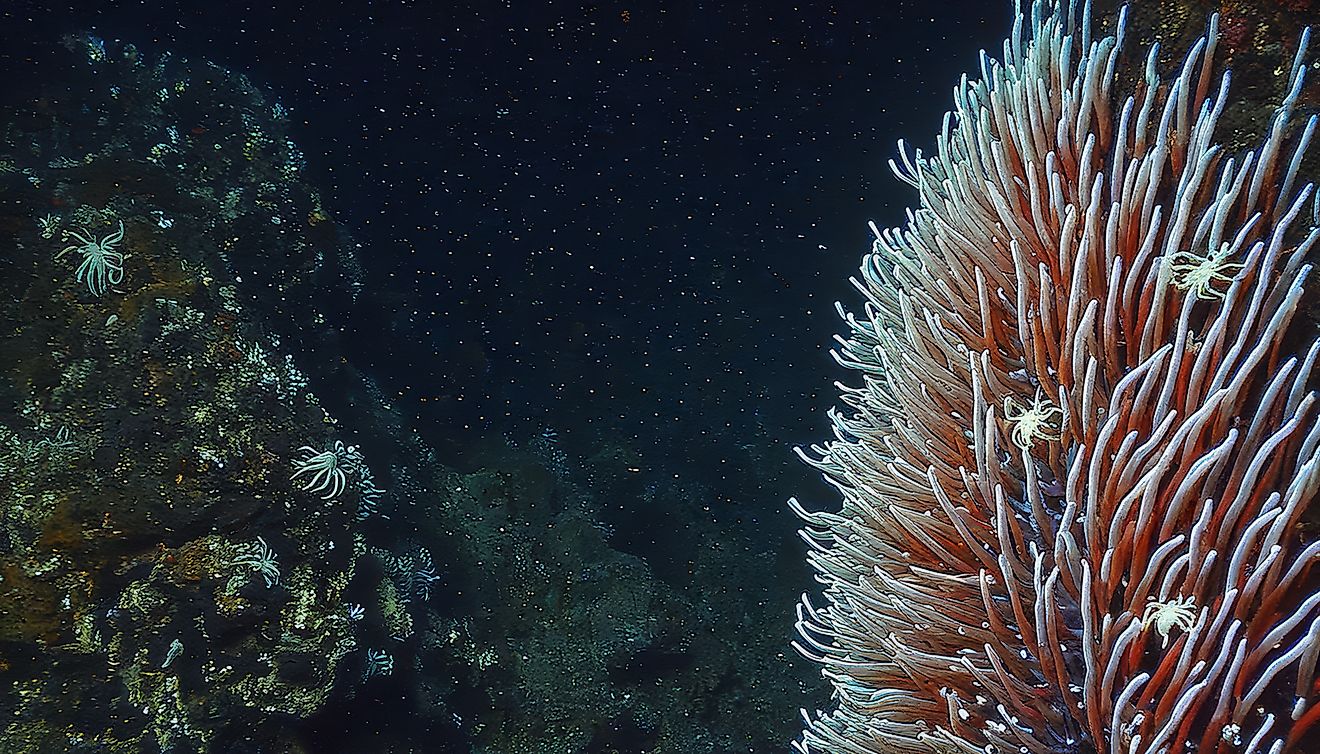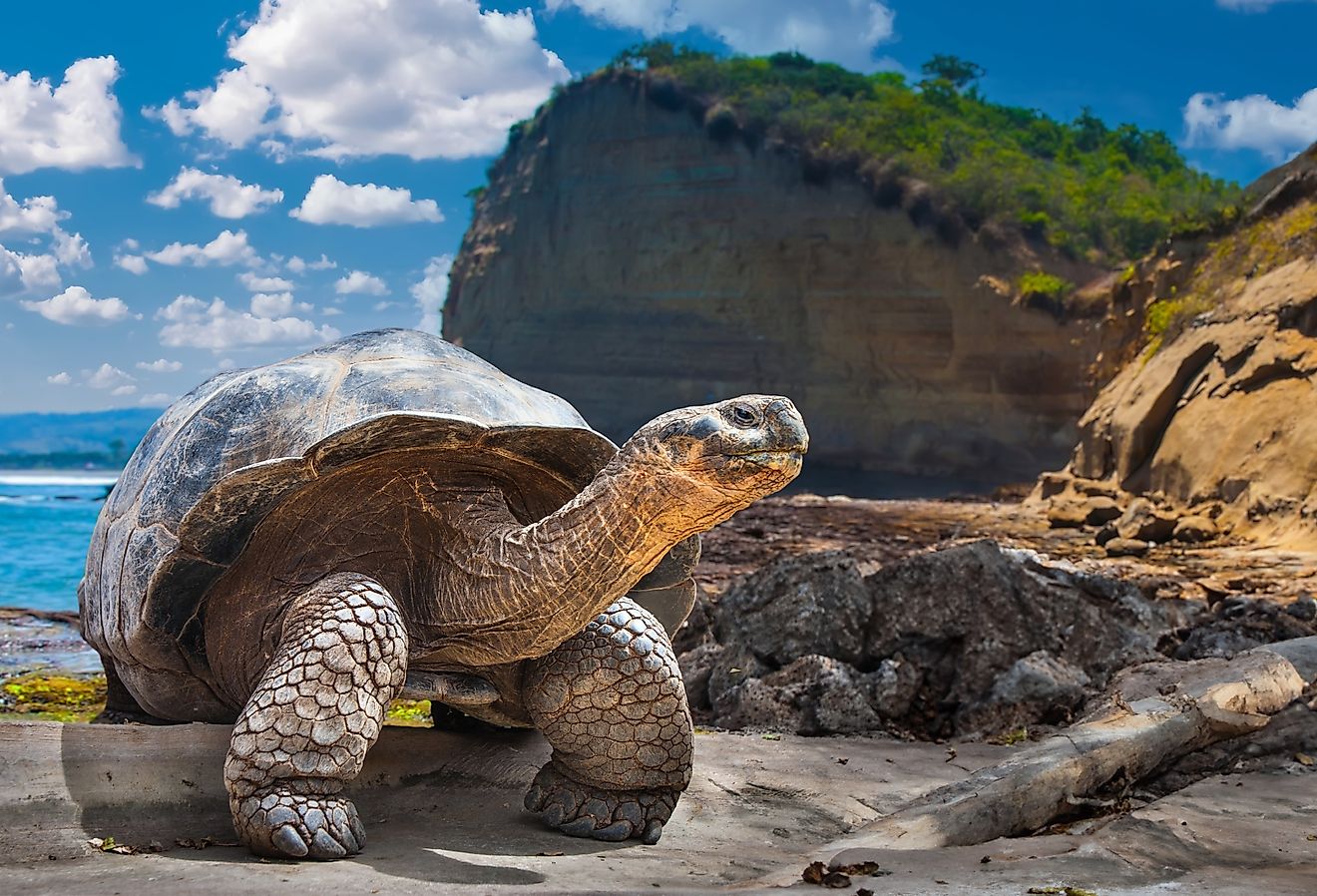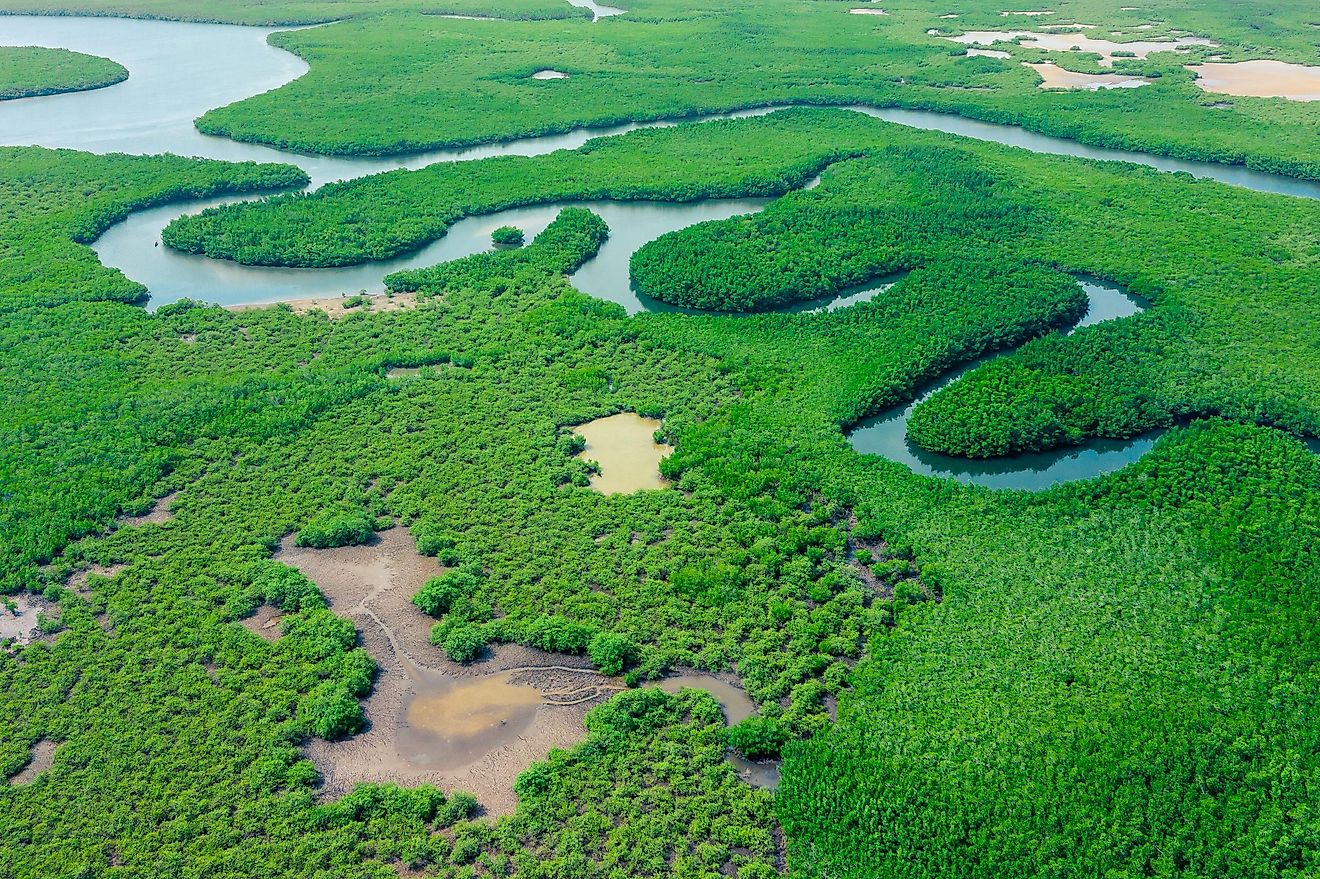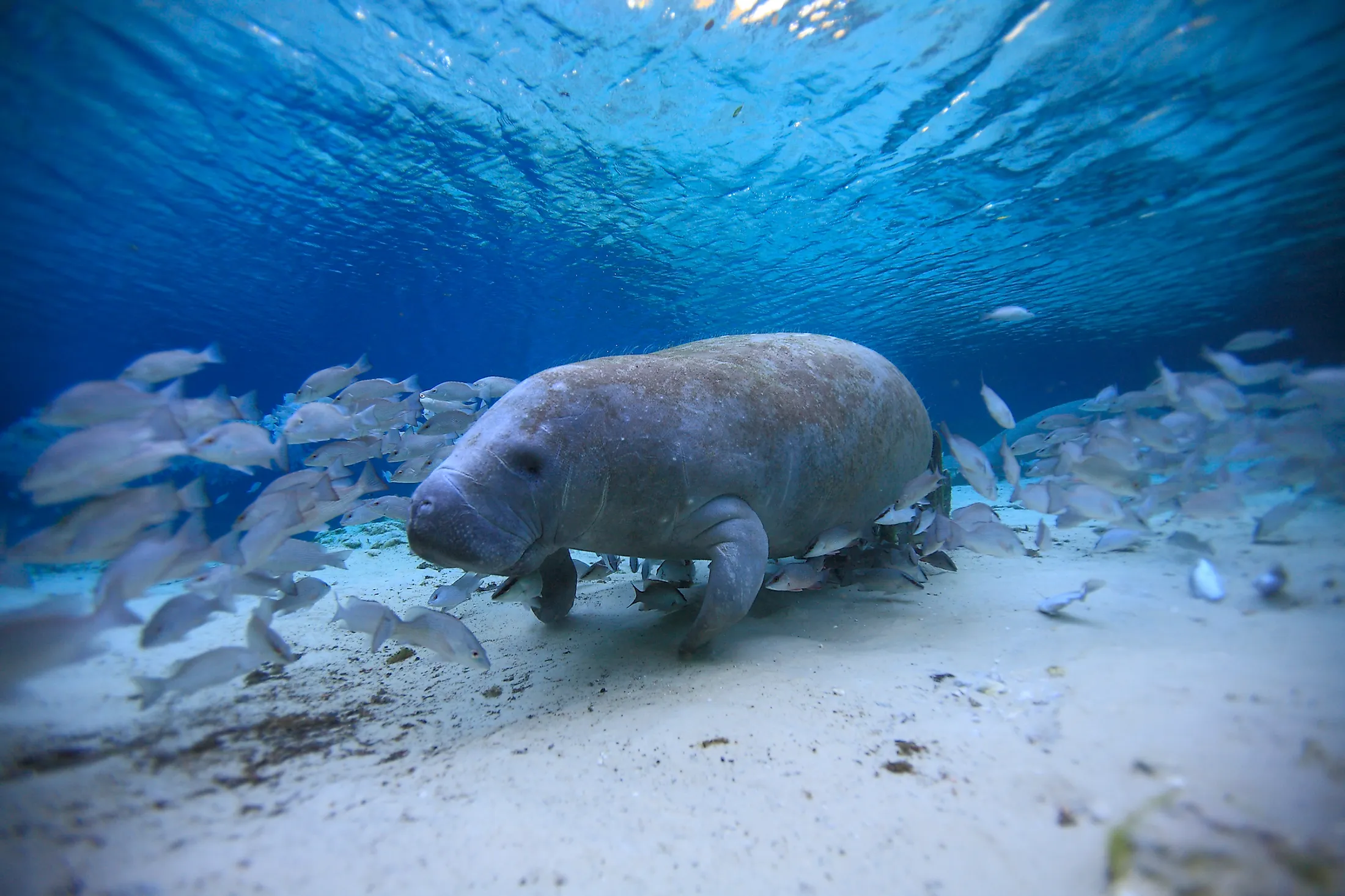
10 Most Threatened Animals Of America
Our planet is home to an estimated 5.3 million to 1 trillion species of organisms. Despite such incredible diversity, Earth is currently in the midst of its sixth mass extinction. Mass extinction events involve the loss of a high percentage of distinct species within a relatively short geological timeframe. In contrast to the previous five mass extinction events, which were caused by natural phenomena, this sixth mass extinction is primarily human-driven. Climate change, combined with urbanization and humankind's unsustainable thirst for land, water, and energy, has placed significant strains on the natural world. As such, over 31,000 species are considered by the International Union for Conservation of Nature (IUCN) to be at risk of extinction.
As with most other nations, the United States contains a number of species that are at high risk of extinction. In fact, it is estimated that one in five of America's plant and animal species are currently at risk, a figure which amounts to a whopping 1,300 species when taking all the nation's known species into account. While all these species deserve our attention and efforts, here are ten of America's most threatened species.
Florida Manatee
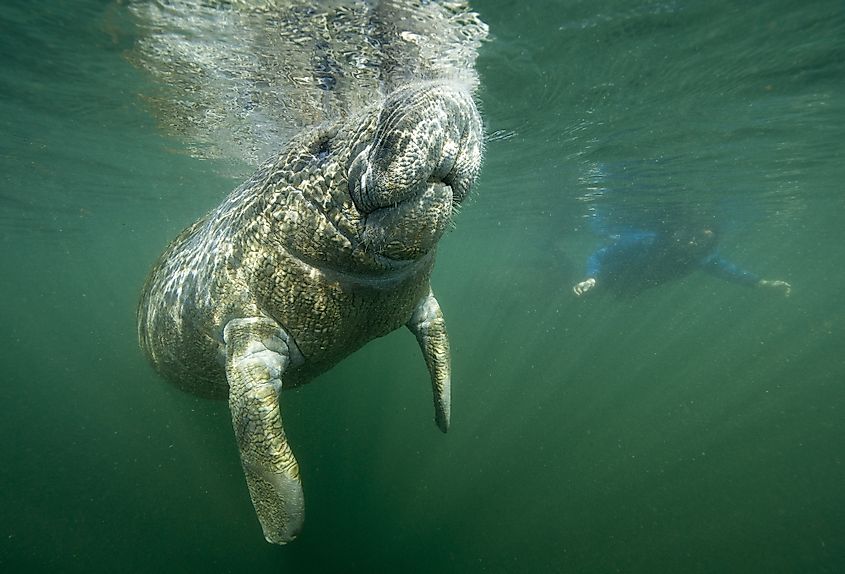
A large aquatic relative of the elephant, the Florida manatee (Trichechus manatus latirostris) is a subspecies of the West Indian manatee (Trichechus manatus). These aquatic herbivores are considered one of Florida's keystone species, as their behavior serves as an indicator for researchers when it comes to overall environmental and habitat changes. Moreover, these manatees play a crucial role in influencing plant growth within the coastal waters, bays, rivers, and estuaries they call home. Among the greatest threats to the species are habitat loss, fishing gear entanglement, human harassment, and collisions with boats. Climate change and its resultant algal blooms also pose threats to individuals of this species upon exposure. The species was first placed under protection through the 1893 Florida State Law, which was subsequently followed by the Florida Manatee Sanctuary Act.
This is one of the species on our list that has recovered considerably well after becoming federally protected, as its population has grown to a minimum of 8,810 individuals over the past 30 years. In turn, the species was reclassified in 2017 as a threatened species instead of an endangered species under the federal Endangered Species Act. Nevertheless, a large-scale die-off occurred in 2021 primarily due to pollution-fueled loss of seagrasses, one of their major food sources. This die-off alone resulted in a loss of at least 700 individuals, a tragic loss that further emphasizes the need for their continued protection.
Red Wolf
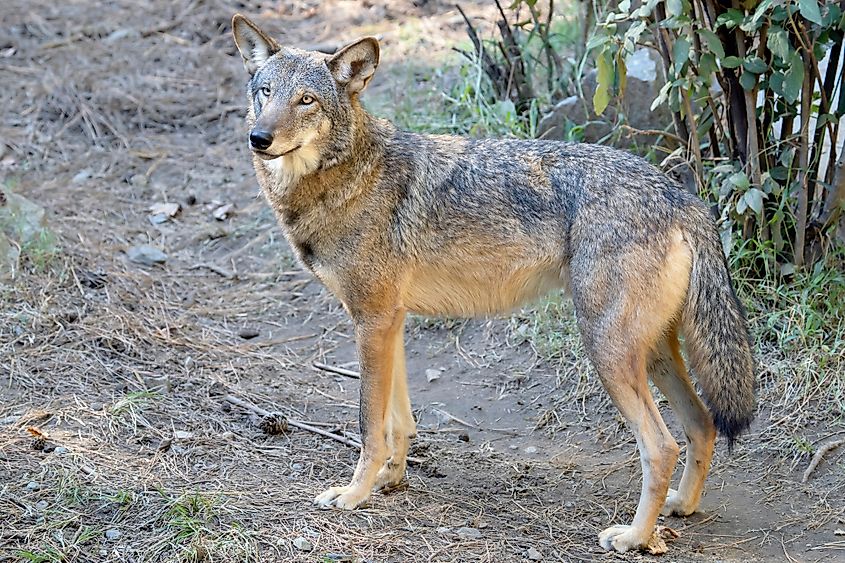
One of two species of North American wolf species, the red wolf (Canis rufus) is renowned for its characteristic reddish coloration around its neck, ears, and legs. The red wolf once occupied a large range throughout the southeastern US as it roamed as west as Texas, up into the Midwest, and down into Florida. Yet, this species has lost over 99.7% of its historical range due to hybridization, gunshot mortality, and habitat loss and degradation. This makes it one of the world's most endangered canids.
Large-scale hunting and persecution throughout the 19th and 20th centuries led to only a small population persisting in eastern Texas and southwestern Louisiana by the 1960s. In response, a rescue plan was set forth in 1974 whereby 14 of the remaining individuals were taken to Point Defiance Zoo and Aquarium in Washington with the aim of establishing a captive breeding population. After being declared extinct in the wild in 1980, the red wolf was reintroduced into the Alligator River refuge in eastern North Carolina. This continues to be the only location where red wolves can be found in the wild. Despite initial population growth and a peak of 130 individuals in 2006, the population has significantly declined over the years to an estimated 25 to 35 individuals only. Therefore, the species is currently classified as critically endangered by the IUCN.
North Atlantic Right Whale
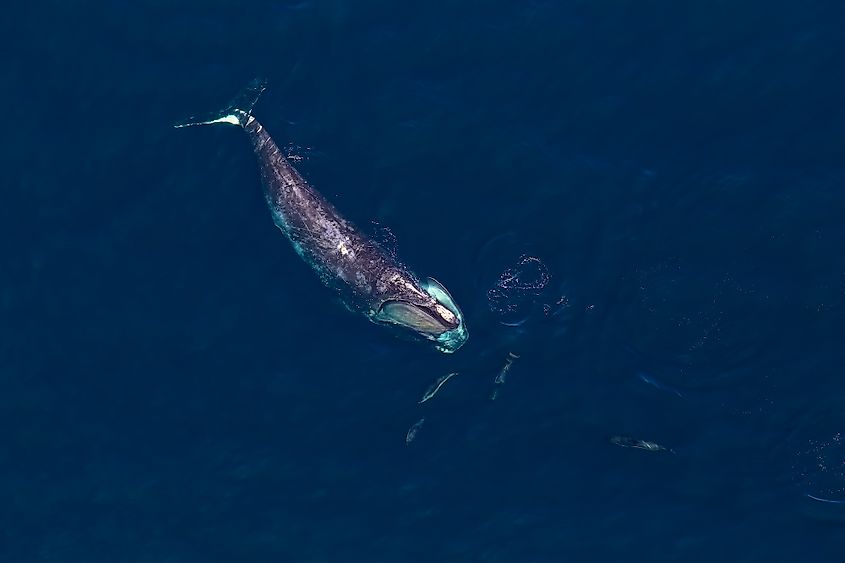
Considered one of the most endangered species of large whales, the North Atlantic right whale (Eubalaena glacialis) population has been rapidly declining over the past decade. Historically, the species was overexploited to the point of extinction by the early 1900s due to the commercial whaling industry. Upon an international agreement banning the whaling of all right whales came into effect after 1935, the North Atlantic right whale population began to recover. However, this recovery has been impeded over the years by ships collisions, entanglement in fishing gear, and calf separation resulting from shipping traffic. With less than 400 individuals currently remaining, of which less than 100 are reproductively active females, the species can be exclusively found off the eastern coasts of the US and Canada. It is estimated that only 30 individuals persist within US waters. Given the significantly small remaining population, any persisting threats can prove to be catastrophic on such a slow-growing population.
Florida Panther
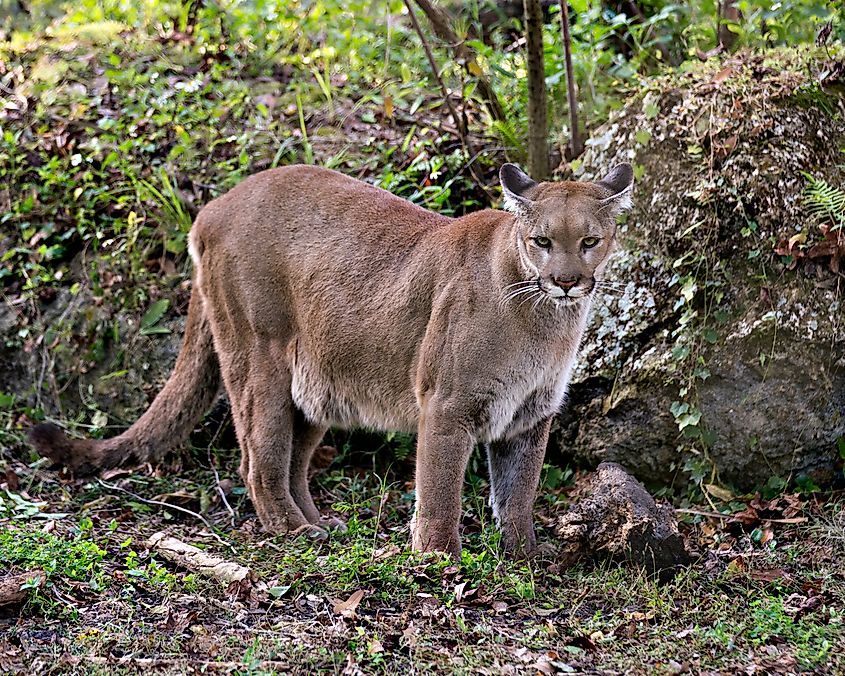
A subspecies of the cougar (Puma concolor), the Florida panther (Puma concolor coryi) is the only cougar population found east of the Mississippi. This subspecies once roamed the southeastern US, extending from Florida to Louisiana, Arkansas, and the Gulf Coast but was heavily decimated by hunting and the clearing of its habitat upon the arrival of European settlers in the 1600s. In fact, populations reached such record lows that the Florida panther was one of the first species to be added to the 1973 US endangered species list. The current population numbers between 120 to 130 individuals and is confined to southern Florida's swamplands. These include Big Cypress National Preserve and the Everglades National Park. Given its critically low population number, the subspecies's low genetic diversity makes it increasingly vulnerable to mercury pollution and feline leukemia. Even though the subspecies is one of the US' most endangered mammals, it persists as Florida's official state animal.
Kemp's Ridley Sea Turtle
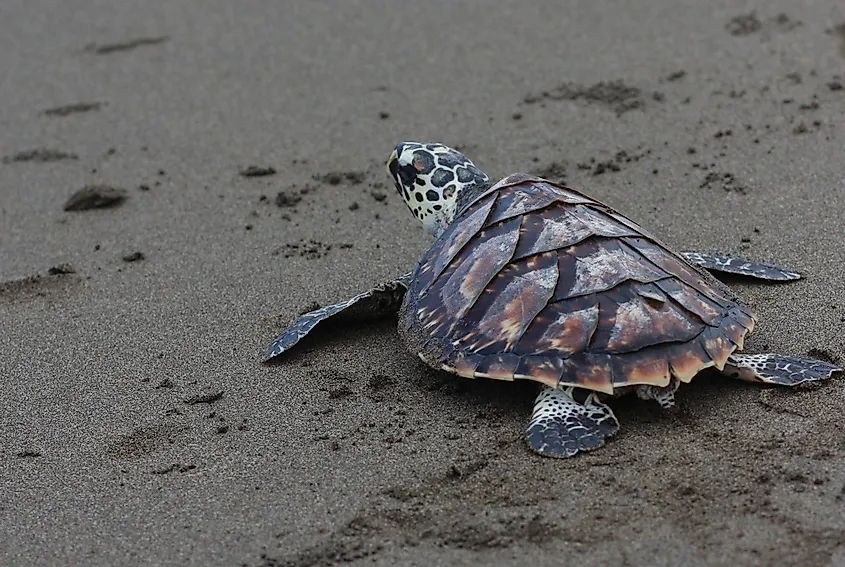
Considered the world's smallest marine turtle, the Kemp's ridley sea turtle (Lepidochelys kempii) is also the world's most endangered sea turtle species. In fact, this turtle species is listed as critically endangered internationally and endangered in the US upon its placement under the 1973 Endangered Species Act. Kemp's ridley sea turtles are typically located within the Gulf of Mexico, particularly in nearshore and inshore waters in Louisiana, as it forms their primary feeding grounds. Historically, the species was overexploited for human consumption prior to its protected status. In addition to their increasingly at-risk nesting habitats, these turtles are frequently caught in gill nets, shrimp trawls, dredges, longlines, and traps. Although conservation efforts have proven to be partially successful, events such as the Gulf oil spill presented significant setbacks to this species' road to recovery. Fishing gear modifications, closures of certain areas for fishing, and changes to fishing practices are reducing overall bycatch numbers and aiding in the species' recovery.
Dusky Gopher Frog
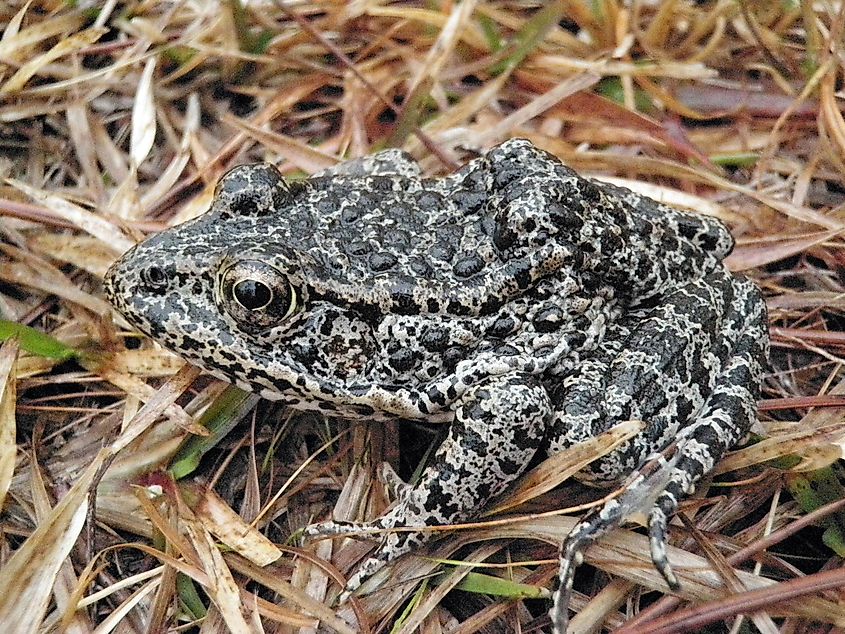
A critically endangered species, the dusky gopher frog (Lithobates sevosus) is medium-sized species that is typically brown, black, or grey with bumps across its body and ridges along its back. According to the IUCN, the species is considered one of the world's top 100 most endangered species, given its estimated wild population of only 135 individuals. With a historical range stretching from southern Mississippi through southeastern Louisiana to southwestern Alabama, the species is now confined to two localities within Jackson and Harrison counties in Mississippi. This species' substantial decline is attributed to logging, urbanization, as well as habitat degradation, particularly that of their breeding wetlands. Over 98% of the longleaf pine forests that these frogs depend on have now been destroyed. To add, the small population and its low genetic diversity make the species exceedingly susceptible to diseases, local pollutants, and prolonged droughts. Despite advances in upland habitat and wetland restoration, the lack of expanding frog populations and legal controversies currently maintain the considerable risk wild populations are encountering.
Whooping Crane
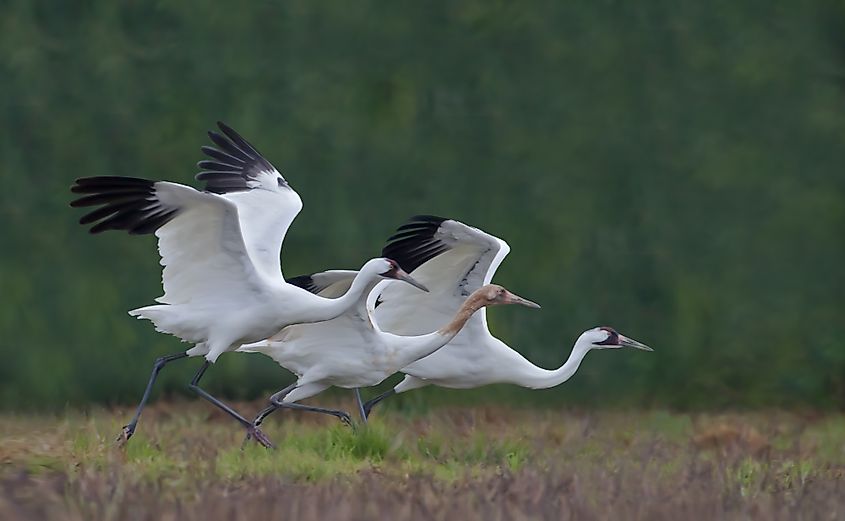
The whooping crane (Grus americana), distinguished by the large red patch on its head, is the tallest bird in North America and the rarest of all species of crane. Their population was almost entirely decimated in the 1800s and 1900s, as hunting and habitat loss led to a remaining population of merely 15 individuals by 1941. All of these individuals, which belonged to the same flock, were placed under protection through the combined efforts of local, federal, and international governments. This led to the population gradually increasing over the years, reaching 214 individuals by 2005. When attempting to establish multiple populations, an innovative program incorporating an ultralight aircraft was used to teach young whooping cranes how to migrate from western Florida to Wisconsin. As a result of such captive breeding programs as well as effective wetland management, the whooping crane population has risen to approximately 600 individuals as of today.
O'ahu Tree Snails
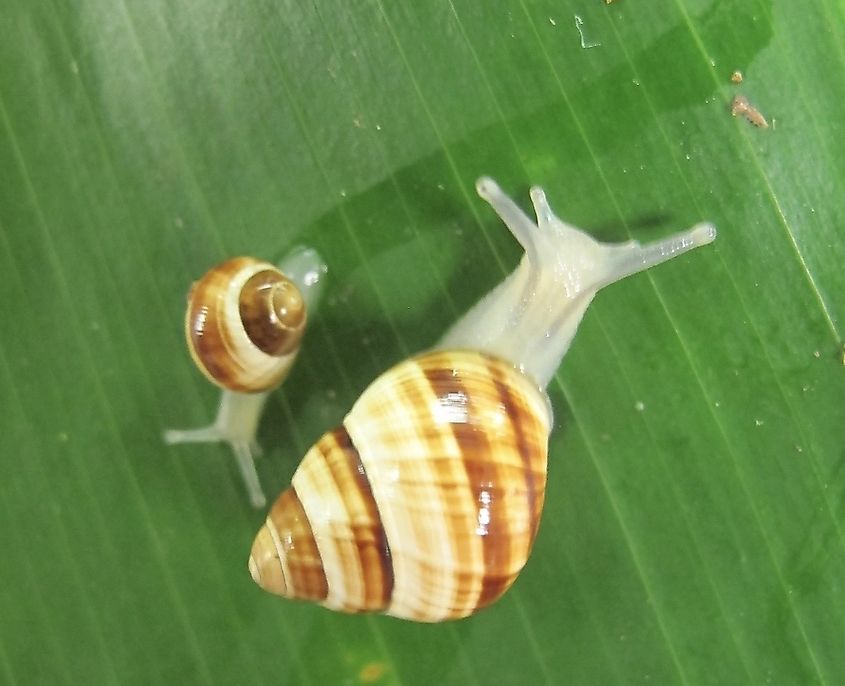
With all 41 species of O'ahu tree snails belonging to the Achatinella genus, these small colorful tree snails are restricted to the native forests of Wai'anae and Ko'olau on the Hawaiian island of O'ahu. Of these 41 species, 22 are believed to be fully extinct and 18 are at high risk of extinction. The populations of these species significantly plummeted upon the introduction of rats and the deforestation of their native habitat. The snails were also heavily collected by humans for leis or various other ornaments. Moreover, the introduction of the carnivorous snail, Euglandina rosea, further pushed their populations to the very edge. Nowadays, these snails are at high risk of habitat degradation due to pigs and invasive vegetation such as non-native silk oak, strawberry guava, and Christmas berry. In response, captive breeding programs for two of the species have been established at the University of Hawai'i. Existing habitats are continuously protected and maintained to control Euglandina rosea and rat populations, which continue to heavily prey upon the snails.
California Condor
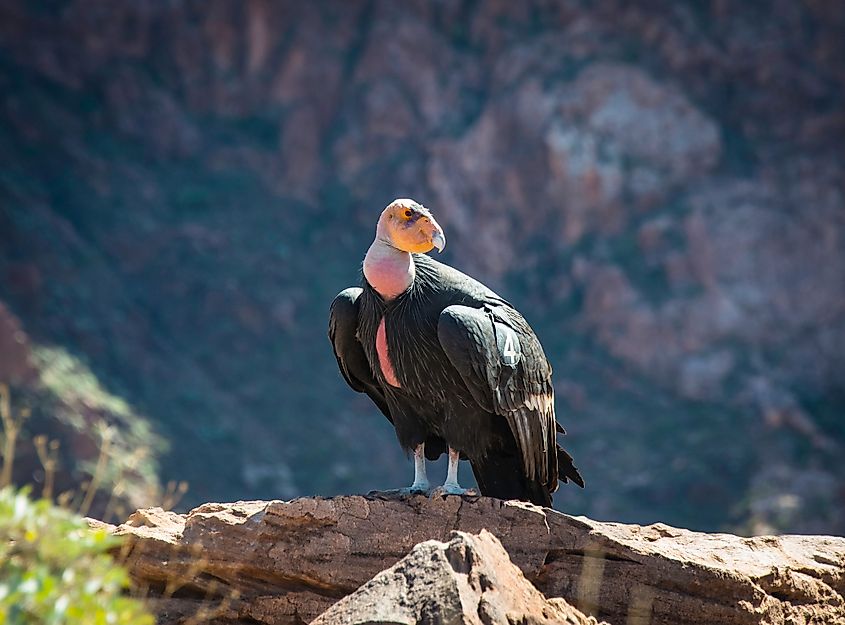
Known as North America's largest bird, the California condor (Gymnogyps californianus) was once revered by Native Americans and thought to possess spiritual abilities. These birds currently occupy only a fraction of their historic range that extended from California to as far east as Florida and New York. A major culprit behind the mass decline of their populations is lead poisoning, which coincided with the establishment of European settlements. These birds would accidentally ingest fragments of ammunition containing lead from the carcasses of animals that were hunted. Furthermore, condor eggs were also becoming increasingly thinner and less viable due to the spread of pesticides. Indiscriminate hunting and the decimation of their habitats for urbanization also played major roles in their subsequent demise. By 1980, upon realizing how close the species truly was to extinction, an all-out conservation effort was launched to preserve the species. In 1987, only 27 condors remained, all of which were brought into captivity for breeding. These breeding programs proved successful, and individuals were reintroduced in 1992. Today, the population numbers approximately 300 individuals and is distributed across central southern California, Utah, Arizona, and Mexico.
Black-footed Ferret
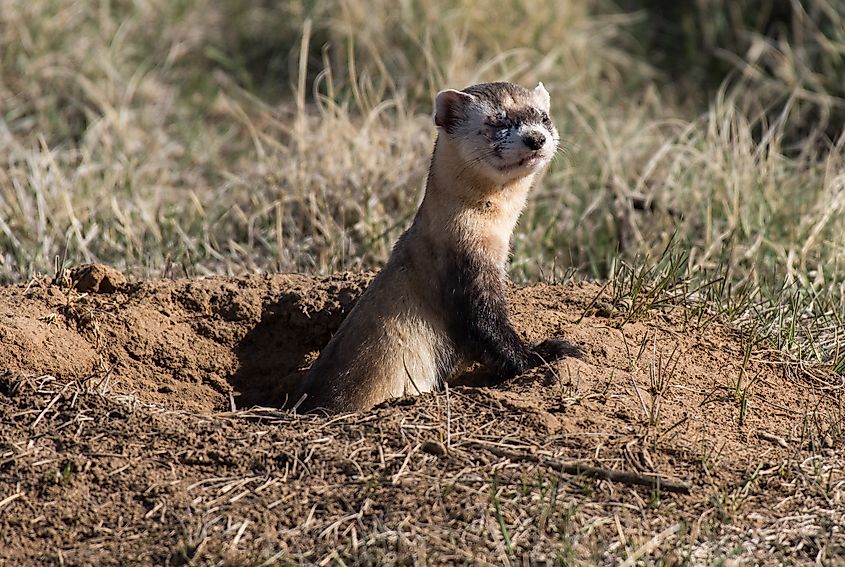
The black-footed ferret (Mustela nigripes) is another one of the US' most endangered mammals. These ferrets witnessed an unprecedented decline in the 1900s due to the parallel decline of their primary food source of prairie dogs (genus Cynomys). Viewed as an agricultural pest, prairie dogs were deliberately exterminated by farmers and ranchers, often with the aid of the US government. In addition to prairie dog populations suffering due to habitat conversion for the purposes of cropland, they also significantly declined as a result of the sylvatic plague. Given the near eradication of prairie dogs, which form approximately 90% of the ferrets' diet, ferret populations dropped so substantially that they were feared to be extinct by the 1970s. Upon the rediscovery of seven black-footed ferrets in 1981, conservationists worked hard to reestablish a captive-breeding population. Reintroduction efforts have generally been successful, with the first reintroduction event occurring in 1991. With a current population of approximately 300 individuals, reintroduced black-footed ferrets can be found in South Dakota, Wyoming, Arizona, and Montana.
These ten species are only some of the many remarkable species under significant threat of completely disappearing off the face of our planet. Species worldwide are declining at an unprecedented rate that is 100 to 1,000 times faster than before humans arrived on the scene. As such, it is our responsibility to appreciate these species and ensure their continued survival so that they may be witnessed and enjoyed by generations to come.

